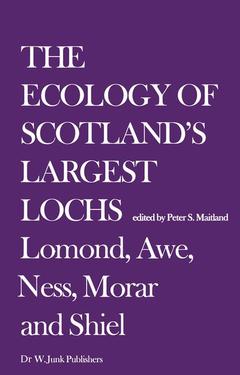Description
The Ecology of Scotland’s Largest Lochs
Lomond, Awe, Ness, Morar and Shiel
Monographiae Biologicae Series, Vol. 44
Coordinator: Maitland Peter S.
Language: English
Subject for The Ecology of Scotland’s Largest Lochs:
Keywords
ecology; fisheries; limnology; phytoplankton; plankton; zooplankton
Publication date: 11-2013
297 p. · 15.5x23.5 cm · Paperback
297 p. · 15.5x23.5 cm · Paperback
Description
/li>Contents
/li>
Scotland is fortunate in being very richly endowed with natural fresh waters in the form of numerous lochs and rivers. These constitute on the one hand an attractive feature of the landscape and on the other a major resource for industry and recreation. Thus there are about 3800 lochs over4 ha in area and these form approximately 1.0% of the total surface area of Scotland. Com parable figures for England and Wales are 1700 lakes and 0.05% of the land surface, and in terms of volume. Loch Ness contains more water than all the lakes and reservoirs in England and Wales put together (Smith & Lyle 1979). Many of the Scottish lochs are large and clean and consequently are particularly valuable in resource terms. The decision as to which are actually the largest lochs is debatable, particularly when the main criteria of greatest surface area, length, volume and depth each gives a different water (Lochs Lomond. Awe, Ness and Morar respectively). These four then are certainly among the largest lochs in the country, but close to them in size come several other large waters, among which is Loch Shiel- which is exceeded in length only by Lochs Awe, Ness and Lomond. These five very large lochs (Frontis piece) form the group of waters selected for the comparative studies described in this volume.
1. Introduction and catchment analysis.- 2. Comparative physical limnology.- 3. Chemical characterisation. A one-year comparative study.- 4. The phytoplankton.- 5. A review of macrophyte studies.- 6. The crustacean zooplankton.- 7. The littoral zoobenthos.- 8. The profundal zoobenthos.- 9. The fish and fisheries.- 10. Comparisons and synthesis.
© 2024 LAVOISIER S.A.S.
These books may interest you

The Ecology of Loch Lomond 105.49 €



